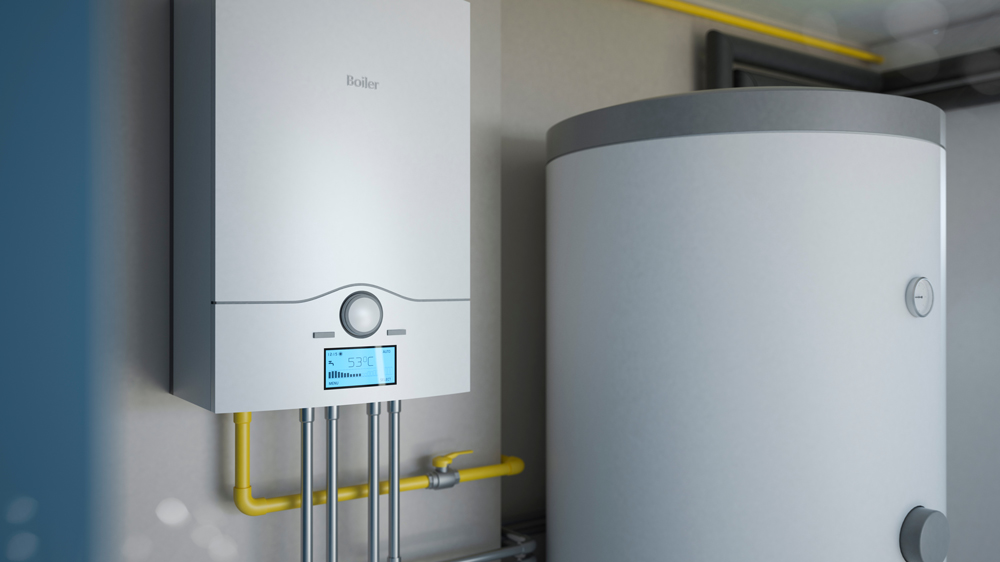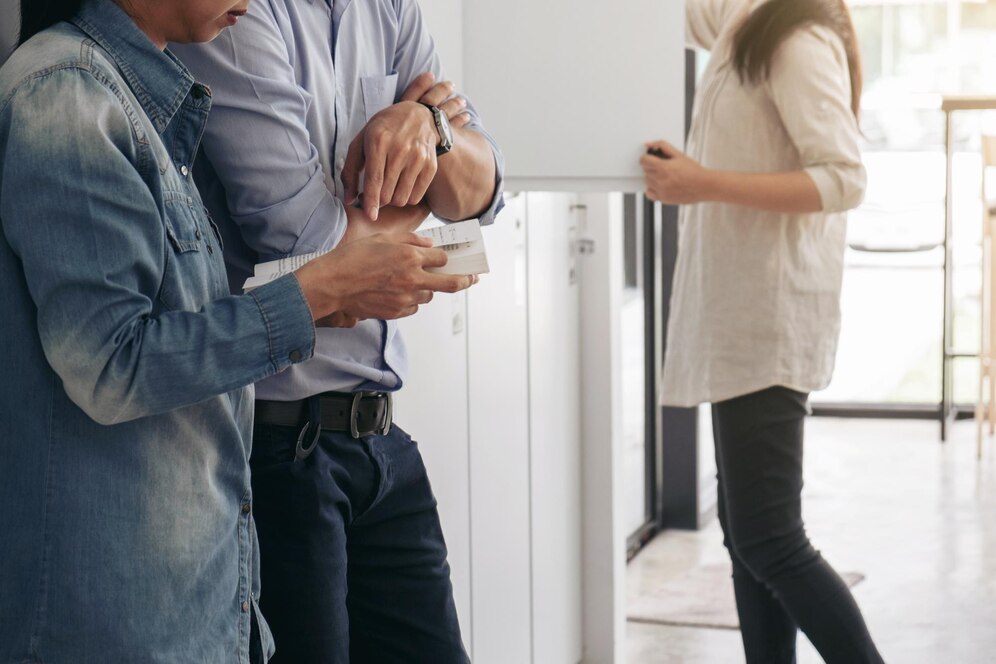Choose the right tankless (on-demand) water heater with confidence. This guide covers sizing (GPM & temperature rise), condensing vs. non-condensing models, venting and gas/electrical needs, recirculation, water quality, installation best practices, costs, and FAQs—tailored for homeowners across the Greater Toronto Area (GTA).

Quick Highlights
-
Size by GPM at temperature rise (ΔT)—not by “equivalent gallons”
-
Condensing tankless = highest UEF and coolest exhaust (PVC/PP vent)
-
Recirculation options for near-instant hot water at distant taps
-
Plan for gas line & venting (or high-amp circuits for electric)
-
Include service/flush valves for quick annual descaling
-
Hard-water strategy: descale + scale-reduction to protect the heat exchanger
-
Pro commissioning (combustion/electrical, venting, condensate) protects warranty
Tankless 101: How It Works
A tankless unit heats water only when you open a tap. A flow sensor starts the burner or elements; the control board modulates output to hold your set temperature (typically 120°F / 49°C). No standby tank = energy savings and a compact, wall-mounted footprint.

-
Add simultaneous fixtures (typical flows):
-
Shower: 1.8–2.5 GPM (modern heads ~2.0)
-
Bathroom/sink: 0.5–1.0 GPM
-
Dishwasher: 1.0–1.5 GPM
-
Laundry: 2.0–2.5 GPM
-
Tub fill: 4–6 GPM (high demand)
-
-
Estimate ΔT to your setpoint. GTA winters often require 60–75°F (33–42°C) rise to reach 120°F/49°C.
-
Choose a model that delivers your required GPM at winter ΔT (not just summer ratings).
Example: Shower (2.0) + sink (1.0) = 3.0 GPM at 70°F ΔT → select a unit that’s rated ≥ 3.0 GPM at 70°F ΔT.
Tip: Look for a wide turndown ratio (e.g., 10:1). It helps hold a steady temperature at low flows.
-
Condensing (Highest UEF): Recovers heat from exhaust; uses PVC/PP vent and needs a condensate neutralizer & drain/pump. Best whole-home efficiency.
-
Non-Condensing (Value): Lower upfront cost; uses Category III stainless vent; slightly lower efficiency.
-
Direct or concentric venting with proper clearances and termination—no chimney venting.
-
Gas line sizing & regulator capacity are critical (many whole-home units require ¾″–1″ supply).
-
Electric tankless can need significant panel capacity and multiple breakers—best for point-of-use or specific homes.
-
Combustion air, vent slope, and intake/exhaust separation are part of a safe install.
-
Dedicated return loop (best performance)
-
Crossover valve at a distant fixture (no return line)
-
On-demand pumps (button/motion) or smart scheduling to minimize energy use
Add a small buffer tank or choose models with built-in recirc to reduce the “cold-water sandwich.”
Hard water causes scale—lower flow, temperature swings, and error codes. Protect your investment with:
-
Annual descaling/flush via isolation valves (more often in very hard water)
-
Clean inlet screens and flow sensors
-
Scale-reduction cartridge or water softener where hardness is high
-
Load/ΔT sizing and site review (gas/electrical, vent path, condensate, recirc options)
-
Permits & code compliance; proper clearances and seismic/anchoring where applicable
-
Gas/electrical upgrades as needed; direct/concentric vent with correct slope and termination
-
Condensate neutralizer & drain/pump for condensing units
-
Service/flush valves, pressure relief discharge, and recommended mixing valve
-
Commissioning: combustion/electrical checks, flow verification, setpoint calibration, and homeowner training
-
Registration & documents: warranty, manuals, and any rebate submissions
-
Built-in recirculation with timers/sensors
-
Smart controls/Wi-Fi diagnostics
-
Mixing/tempering valve for safety and extended usable hot water
-
Leak detection & auto-shutoff (ideal for finished spaces)
-
Good: Non-condensing tankless, stainless vent, isolation valves
-
For: Budget upgrades, smaller households
-
-
Better: Condensing tankless (high UEF), concentric vent, condensate neutralizer, recirc-ready
-
For: Most detached homes—top efficiency and comfort
-
-
Best: Premium condensing with built-in recirc + buffer, Wi-Fi/app, scale-control accessory
-
For: Maximum comfort, quickest delivery to distant taps, lowest operating cost
-
(Actual models vary; we present several options during your quote.)
Tankless units cost more upfront than standard tanks but often pay back via energy savings, longer life, and space value—especially with condensing efficiency and smart recirculation. Budget for annual descaling in hard-water areas.
-
Age/condition: Heat-exchanger corrosion or repeated PCB/ignition faults
-
Upgrades needed: Undersized gas, improper vent, or chronic scale issues
We’ll provide a repair vs. replace comparison with projected operating costs and any eligible incentives.
-
Annual descaling/flush (more often with hard water)
-
Clean inlet screens and verify flow sensors
-
Inspect venting & terminations and test condensate/neutralizer
-
Confirm recirc schedule/settings; keep setpoint near 120°F / 49°C
Add our Tankless Water Heater Protection Plan for scheduled descaling, priority service, repair discounts, and safety/venting checks.
-
Will you size by GPM at my winter ΔT and provide the performance rating at that ΔT?
-
Do I need gas line or electrical upgrades and what’s included?
-
Which venting method will you use, and where will it terminate?
-
Will you install service/flush valves, a mixing valve, and a condensate neutralizer (if condensing)?
-
How will you commission the unit (combustion/electrical checks, flow tests)?
-
What warranty and maintenance schedule should I expect?
Proudly serving the Greater Toronto Area (GTA) and surrounding communities. Contact us to confirm availability in your neighborhood.
- Get a Tankless Water Heater
- Tankless Water Heater Repair
- Tankless Water Heater Rebates & Incentives
- Tankless Water Heater Buyer’s Guide
How do I know what size I need?
Add your simultaneous GPM and choose a model that meets that flow at your winter ΔT to 120°F/49°C.
Can a tankless run two showers at once?
Yes—when sized correctly for your home’s GPM at winter ΔT.
Will I get instant hot water at every tap?
Heat is instant at the unit, but water must travel the piping. Recirculation makes delivery near-instant at distant fixtures.
Is electric tankless right for me?
Sometimes—for point-of-use or homes with ample panel capacity. Whole-home electric may require major electrical upgrades.
Do I need a water softener?
If hardness is high, use a softener or scale-reduction plus annual descaling to protect efficiency and reliability.
How often is maintenance needed?
Typically annual descaling/flush and screen cleaning; inspect condensate/venting and recirc settings.
Keep it running like new
Add our Tankless Water Heater Protection Plan for annual descaling/flush, priority service, repair discounts, and safety/venting checks—including flow-sensor cleaning and combustion analysis. Preventive maintenance extends unit life, maintains peak efficiency, and keeps your hot water endless and reliable.
Ready for quieter, more efficient heat? Book your free in-home quote today.
- Phone: (905) 895-7787
- Email Us: Send Email
- Service Area: Greater Toronto Area
At Coffee Heating and Air Conditioning, we proudly offer a full spectrum of residential and commercial HVAC services across Toronto and the Greater Toronto Area. From expert installation of high-efficiency furnaces, air conditioners, boilers, and water heaters to precision repairs, emergency service calls, and routine system maintenance, our certified technicians ensure year-round comfort and safety for every client. We also specialize in air quality improvements, duct cleaning, smart thermostat integration, and energy-saving upgrades tailored to your home or business. Whether you’re building new, upgrading, or need fast repairs, our team delivers responsive, reliable solutions backed by industry expertise and a commitment to excellence.
